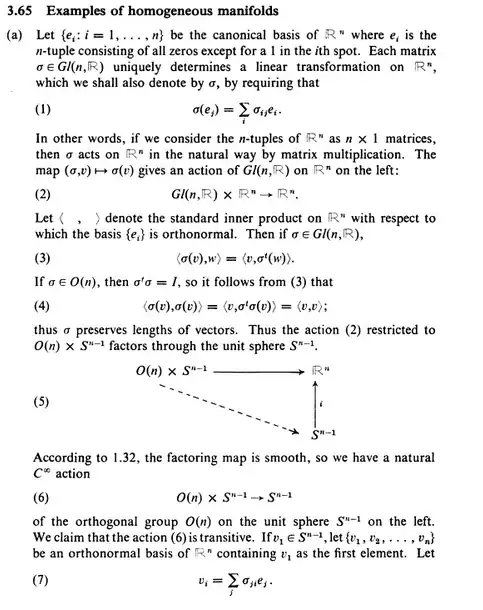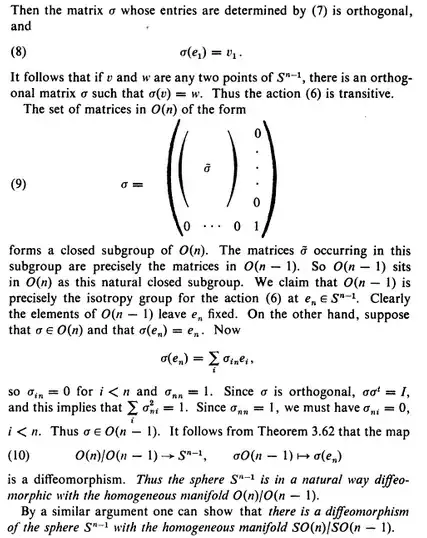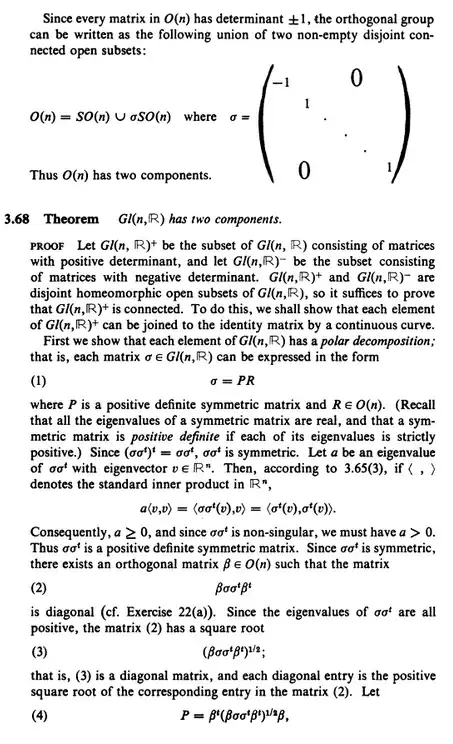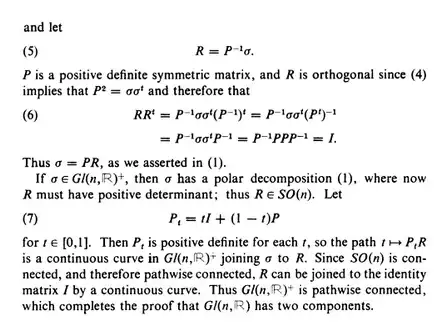Let $G_n$ be the subgroup formed by the elements of $GL_n(\mathbb R)$ whose determinant is positive.
It suffices to prove that $G_n$ is connected.
We prove this by induction on $n$.
The case $n=1$ is trivial.
Assume that $n$ is at least $2$, and that $G_{n-1}$ is connected. Let $e_1$ be the first vector of the canonical basis of $\mathbb R^n$.
By the Constant Rank Theorem, the map
$$
\pi:G_n\to\mathbb R^n\setminus\{0\},\quad g\mapsto ge_1
$$
is a surjective submersion with fiber $G_{n-1}\times\mathbb R^{n-1}$.
The fiber and the base being connected, so is the total space.
EDIT. To make the answer more complete, let's prove:
If $f:M\to N$ is a surjective submersion in the category of smooth manifolds, if $N$ is connected, and if $f^{-1}(y)$ is connected for all $y$ in $N$, then $M$ is connected.
Indeed, let $C\subset M$ be a connected component. It suffices to prove that $f(C)$ is closed.
Let $(c_i)$ be a sequence in $C$ such that $f(c_i)$ tends to some point $f(a)\in N$.
It is enough to find a sequence $(d_i)$ in $C$ satisfying
$\bullet$ $f(d_i)=f(c_i)$ for all $i$,
$\bullet$ $d_i$ tends to $a$.
There exist an open neighborhood $U$ of $a$ in $M$ and a smooth map $s:f(U)\to U$ such that
$\bullet$ $f(s(x))=x$ for all $x$ in $f(U)$,
$\bullet$ $s(f(a))=a$.
We can assume that each $f(c_i)$ is in $f(U)$. Then it suffices to set $d_i:=f(c_i)$.
EDIT B. Here is a mild generalization of the previous edit.
Let $f:X\to Y$ be an open continuous surjection between topological spaces. Assume that $X$ is locally connected, that $Y$ is connected, that $f^{-1}(y)$ is connected for all $y$ in $Y$, and that there is, for each $x$ in $X$, an open neighborhood $U_x$ of $x$ in $X$ and a continuous map $s_x$ from $f(U_x)$ to $U_x$ such that $f\circ s_x$ is the identity of $f(U_x)$. Then $X$ is connected.
Let $C$ be a connected component of $X$. It suffices to show that $f(C)$ is closed.
Let $x$ in $X$ be such that $f(x)$ is in the closure of $f(C)$. It suffices to show that $x$ is in $C$.
Let $U$ be an open neighborhood of $x$ in $X$. It suffices to show that $U$ intersects $C$.
We can suppose $U=U_x$.
As $f(U)\cap f(C)$ is nonempty, we can pick an element $y$ in this subset.
Then $s_x(y)$ is in $U$ by construction, and $s_x(y)$ is in $C$ because
$\bullet\ $ $y$ is in $f(C)$,
$\bullet\ $ $s_x(y)$ is in the connected subspace $f^{-1}(y)$,
$\bullet\ $ $C$ is a connected component.




